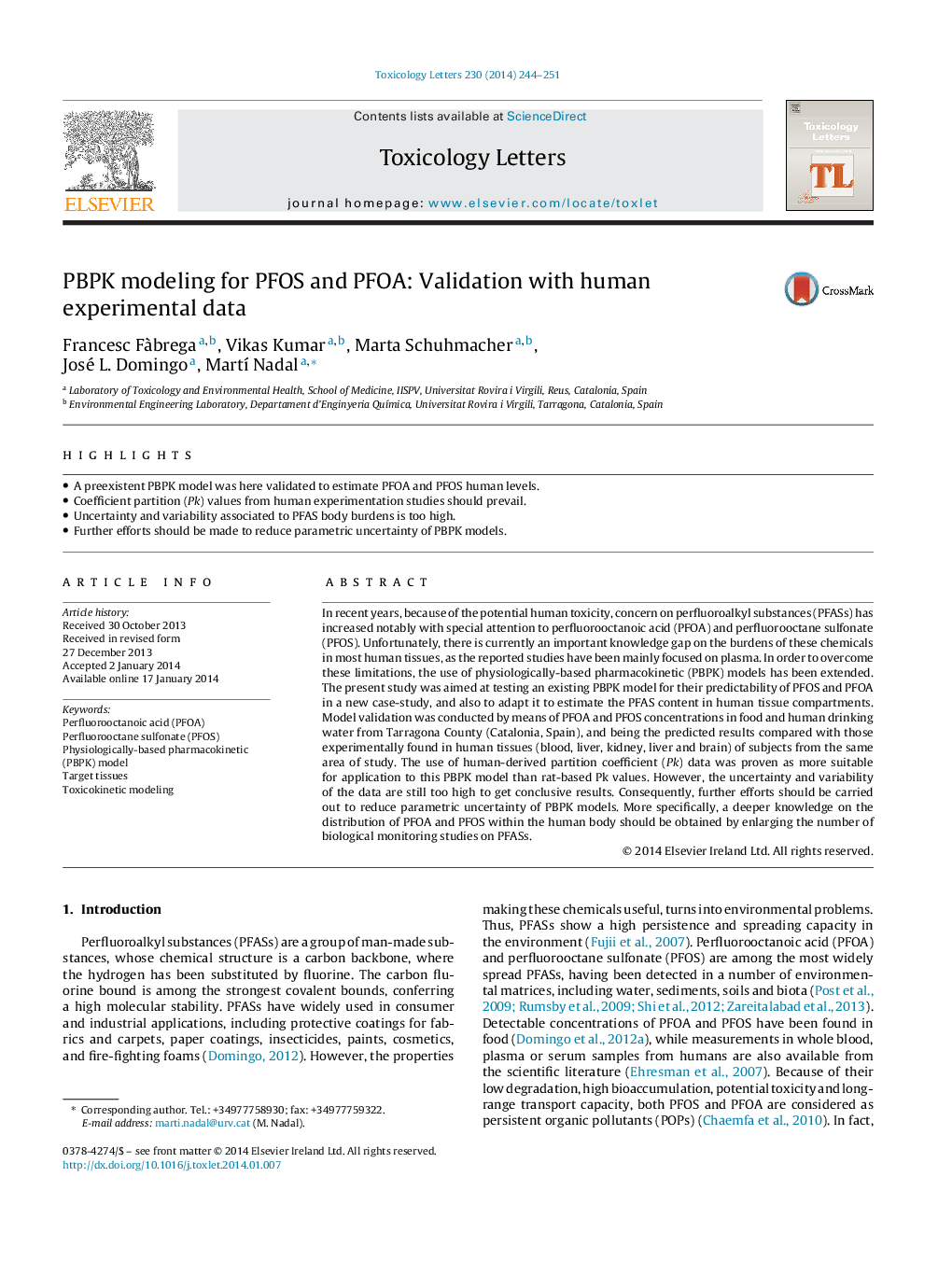| کد مقاله | کد نشریه | سال انتشار | مقاله انگلیسی | نسخه تمام متن |
|---|---|---|---|---|
| 5860177 | 1133169 | 2014 | 8 صفحه PDF | دانلود رایگان |

- A preexistent PBPK model was here validated to estimate PFOA and PFOS human levels.
- Coefficient partition (Pk) values from human experimentation studies should prevail.
- Uncertainty and variability associated to PFAS body burdens is too high.
- Further efforts should be made to reduce parametric uncertainty of PBPK models.
In recent years, because of the potential human toxicity, concern on perfluoroalkyl substances (PFASs) has increased notably with special attention to perfluorooctanoic acid (PFOA) and perfluorooctane sulfonate (PFOS). Unfortunately, there is currently an important knowledge gap on the burdens of these chemicals in most human tissues, as the reported studies have been mainly focused on plasma. In order to overcome these limitations, the use of physiologically-based pharmacokinetic (PBPK) models has been extended. The present study was aimed at testing an existing PBPK model for their predictability of PFOS and PFOA in a new case-study, and also to adapt it to estimate the PFAS content in human tissue compartments. Model validation was conducted by means of PFOA and PFOS concentrations in food and human drinking water from Tarragona County (Catalonia, Spain), and being the predicted results compared with those experimentally found in human tissues (blood, liver, kidney, liver and brain) of subjects from the same area of study. The use of human-derived partition coefficient (Pk) data was proven as more suitable for application to this PBPK model than rat-based Pk values. However, the uncertainty and variability of the data are still too high to get conclusive results. Consequently, further efforts should be carried out to reduce parametric uncertainty of PBPK models. More specifically, a deeper knowledge on the distribution of PFOA and PFOS within the human body should be obtained by enlarging the number of biological monitoring studies on PFASs.
Journal: Toxicology Letters - Volume 230, Issue 2, 15 October 2014, Pages 244-251